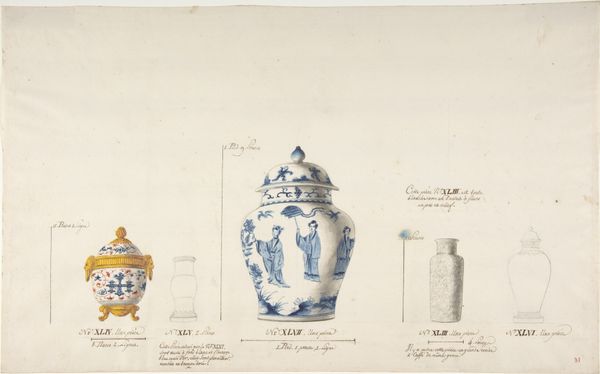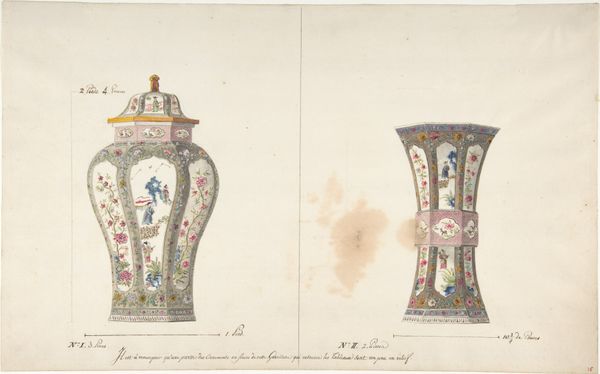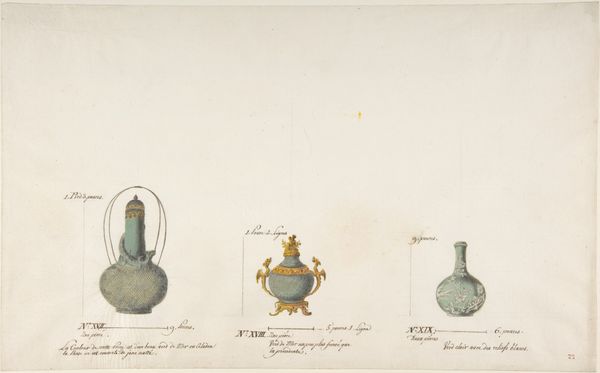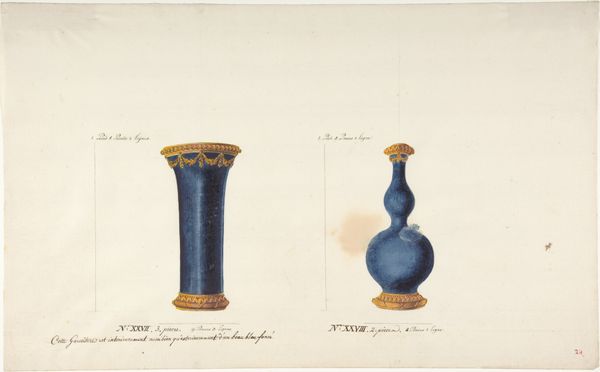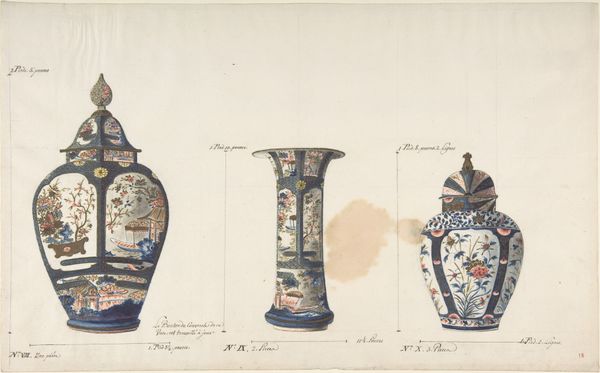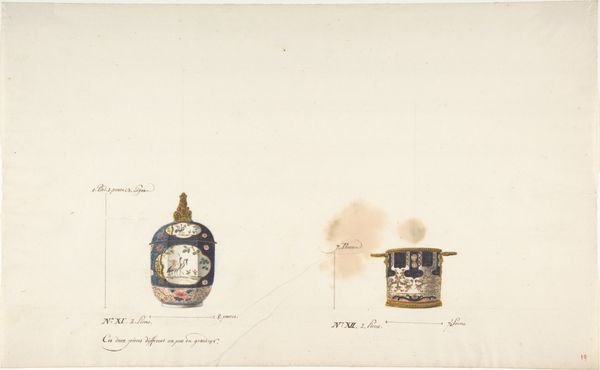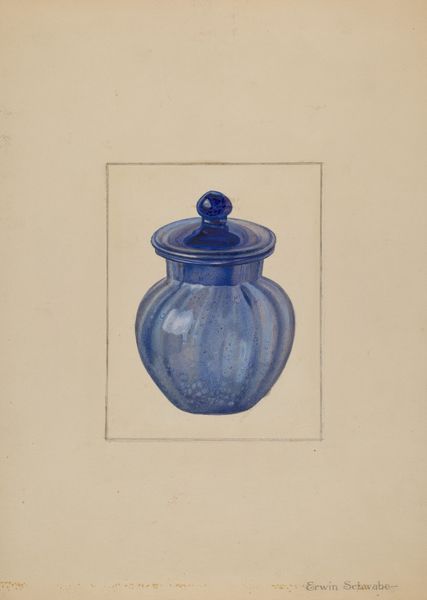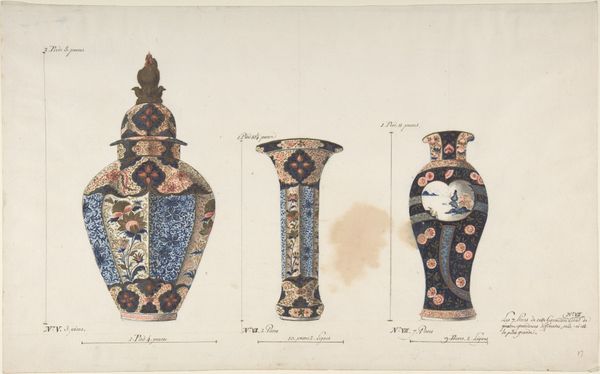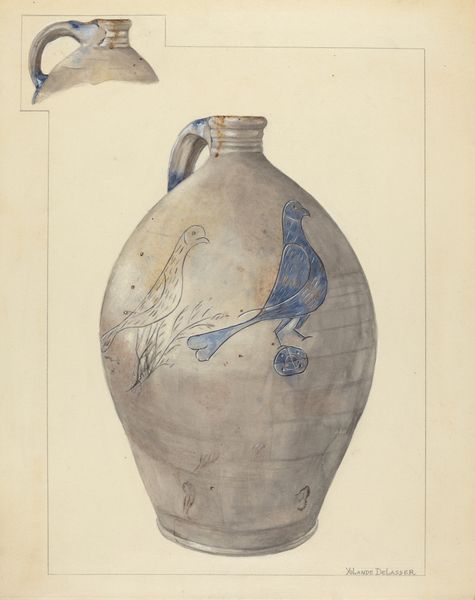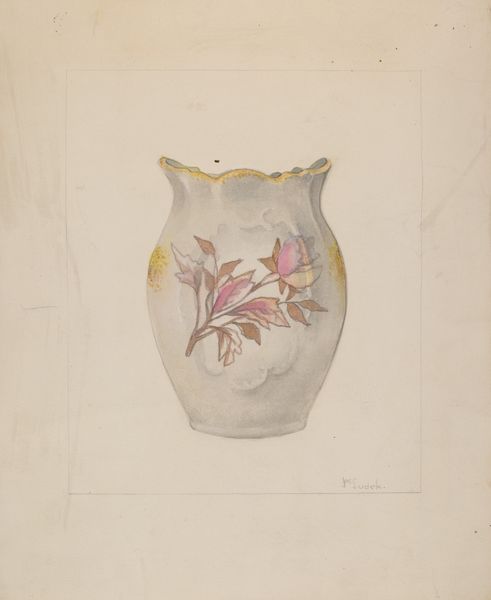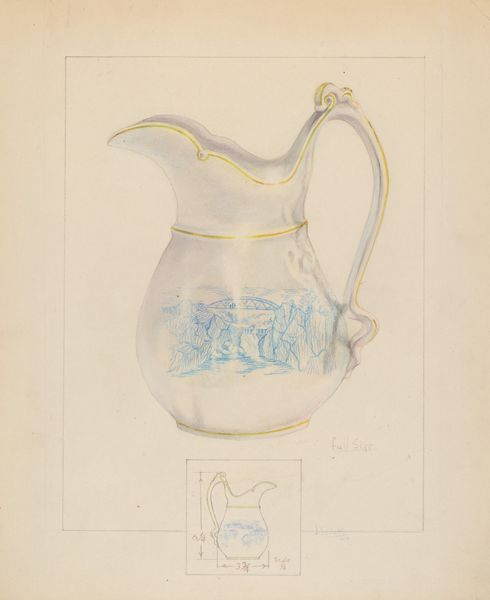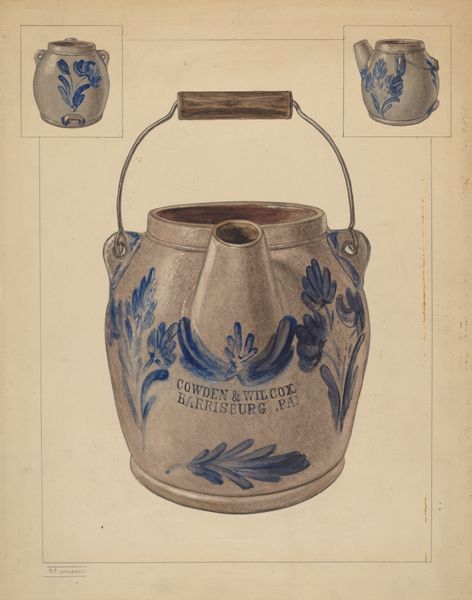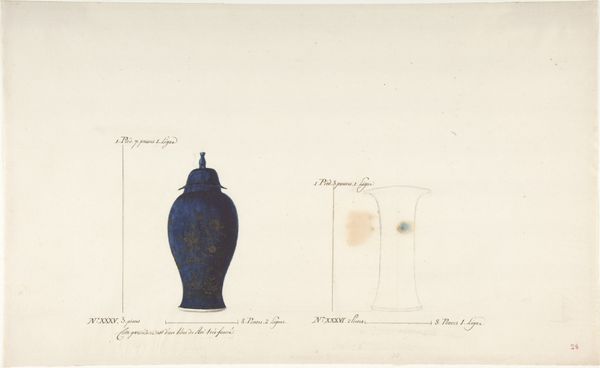
drawing, print, ceramic
#
drawing
# print
#
ceramic
Dimensions: 14 13/16 x 9 3/16 in. (37.7 x 23.3 cm)
Copyright: Public Domain
Curator: Looking at this work, I feel an echo of another time—a design humming with imagined aristocratic elegance. Editor: Absolutely! This is a work titled "Design for Two Vases," dating back to sometime between 1765 and 1790. Though the artist is unfortunately anonymous, it's a drawing meant to guide ceramic creation and can be found at the Metropolitan Museum of Art. I find it immediately striking how it juxtaposes the solidity of the decorated vase with the spectral outline of the other. Curator: Right? One feels complete, even bursting with narrative in blue and white, and the other is this...ghostly, unformed potential. It's like seeing two possible paths of creation laid out side by side. One executed and the other still whispering possibilities. What does that tension say about artistic vision in this period? Editor: Well, vase designs, especially in that era, weren't just about aesthetics. The form, the decorations, they communicated status, access to trade, cultural aspiration. That blank vase could be seen as reflecting social mobility itself - an upper-class desire for refinement, coupled with industrial capability for reproduction that wasn't previously accessible. Curator: It's interesting you bring up status. There's something playful too. See how the artist incorporated whole little miniature landscapes on the existing vase? Complete with buildings, foliage, bridges... it almost borders on whimsical despite the serious intentions. Editor: I agree. That interplay between refinement, social positioning, and this embrace of fanciful landscape touches hits upon the 18th century preoccupation with "picturesque" views and created garden landscapes, bringing art and society into harmony. It reflects the era's attempt to manufacture perfection! Curator: Perhaps that ghost-like vase represents all the effort swept away in realizing such ambition. Maybe the beauty of perfection is in its unattainability and infinite possible forms. I'll consider the tension the drawing expresses between what is formed and what might yet take shape. Editor: A productive and lovely observation. Indeed, contemplating its status as a design, rather than simply being a representation, gives new perspective to the art, aspiration, and craft. Thanks!
Comments
No comments
Be the first to comment and join the conversation on the ultimate creative platform.
